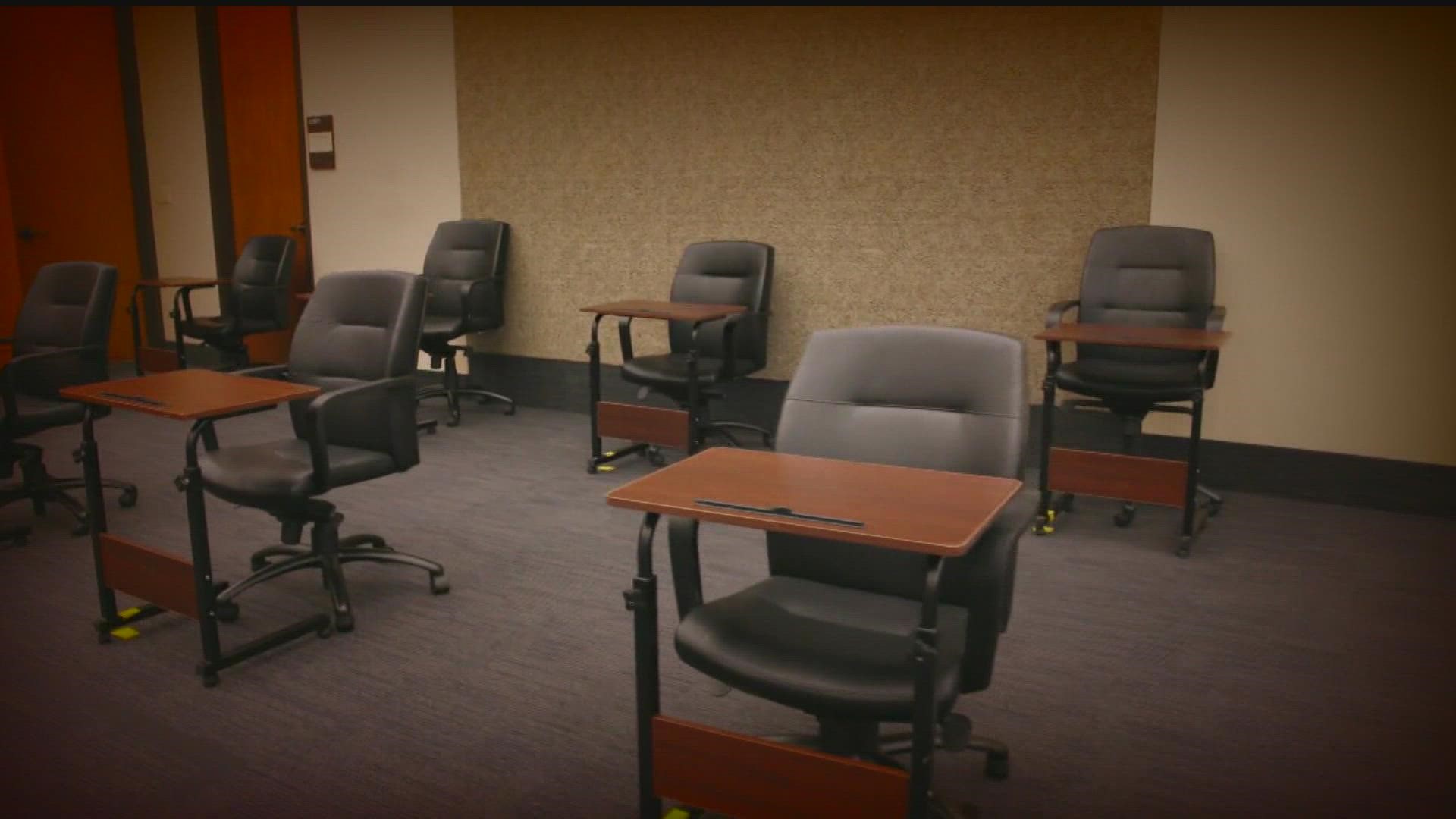MINNEAPOLIS — After deliberating for about eight hours, the jury in the Jamal Smith jury felt stuck.
They had already decided to convict Smith on charges of second-degree murder and illegal possession of a firearm by a felon, but jurors were split on the most serious charge of first-degree murder.
Did Smith intend to kill Jay Boughton while driving on Highway 169 last summer, or did he just intend to scare him? That was the key question that held up the jury before they deliberated an additional eight hours, and delivered guilty verdicts on all three charges.
One juror from the panel, who spoke only on the condition of anonymity due to safety concerns, explained how reluctant jurors eventually began to believe Smith intended to kill Boughton. When they began deliberating on Day 3 Thursday morning their vote count was 9-3 in favor of guilty for first-degree murder.
"(The reluctant jurors) hypothesized that it might have been an accident of some sort, or that weapons were being brandished to intimidate that somehow accidentally went off," the juror explained to KARE 11's Lou Raguse. "They were very stuck on "intent" because it involves knowing what is in someone's mind, which is impossible to know."
But the juror said one major element that eventually turned the tide for those three hesitant jurors was the video evidence recovered from cell phones belonging to Jamal Smith and his backseat passenger Brandon Smothers. The jurors thought the videos taken the day after the shooting, July 7, 2021, conveyed a celebratory mood.
Antoine Smith, the front seat passenger, had already sent Jamal Smith a text with a news article about the shooting. After that, Jamal Smith filmed another video in which he was mimicking the sounds of gunshots.
"Someone who accidentally shot a gun should have shown remorse or been upset. He clearly wasn't," the juror said. "If there was any likelihood this was an accidental discharge or if they just meant to threaten Jay with the gun and made a mistake and felt bad, why were they celebrating?"
In addition, testimony that proved the three men went out to the bar that night with Smith's girlfriend and partied reflected "the mindset of someone who did something intentionally without remorse."
Smith's defense attorneys had hoped a video showing Smothers holding a gun on July 7 would provide reasonable doubt to the jury that Smith was the shooter. The juror said the video did not have that effect on them.
Because of the way prosecutors charged the case, the jury could have convicted Smith whether they believed he was the shooter or if he aided the shooter. Legal observers predicted that could cause some confusion within the jury, and defense attorney Donnelly argued the charging decision was not legally sound. But according to the juror who spoke with KARE, the aiding element was not a major part of deliberations because they all believed Jamal Smith was the shooter.
"It wasn't really a huge consideration for us. Even the strongest holdout felt that Jamal was the shooter," The juror said. "He was the driver. He was the one Jay intended to flick off and honk at, so he was the one with reason to be angry."
In addition, the jury panel was swayed by evidence that showed Smothers was actively texting in the time leading up to the shooting and likely not paying attention to - and certainly not getting angered by - other drivers on the road.
The theory of accidental discharge was never presented in court. The jury speculated about it themselves during jury deliberations, as part of the process of figuring out whether there was reasonable doubt when it came to intent.
One sticking point, according to the juror, was the incident earlier in the day where Wisconsin driver Danni Knight testified about Smith pointing a gun at him after he "brake-checked" the speeding SUV.
"(The guilty holdouts) thought that the previous encounter with the older gentleman in Wisconsin proved Jamal could show restraint and just threaten, not pull the trigger," the juror shared, leading the three hesitant jurors to wonder whether Jamal Smith accidentally fired his gun at Boughton.
"What made no sense was that if they wanted to scare the victim or if it was an accident, Antoine (the front seat passenger) could have easily brandished his weapon with little effort. It took effort on Jamal's part to reach around Antoine to aim at the victim. So reaching around Antoine across the car and rolling down the window seemed to show intent (to the last person who was holding out)," the juror said.
Prosecutor Dan Allard made a point during closing arguments to explain that in Minnesota, circumstantial evidence is given the same weight as direct evidence. This juror was compelled by gun shot residue evidence collected from the front passenger door, indicating the gun was most likely fired inside the SUV's cabin in a way that made most sense if the shooter was the driver.
At the end of the state's case, if the defense had rested instead of putting Jamal Smith on the witness stand, the juror predicts he would have had a better shot of a not-guilty verdict on the 1st Degree Murder count.
The juror pointed to the fact that Smith testified he never even saw Boughton's truck, and when he heard a gunshot he thought it was thunder.
"Jamal was a completely unbelievable witness," the juror said. "We didn't believe anything he said."
Finally, the juror found the testimony of Harrison Boughton, who was seated next to his dad when he was killed, and Jay's wife Kristin Robinson Boughton both heartbreaking and admirable.
"I'd like to commend the Boughton family for their strength," the juror said.
Watch more local news:
Watch the latest local news from the Twin Cities in our YouTube playlist:

